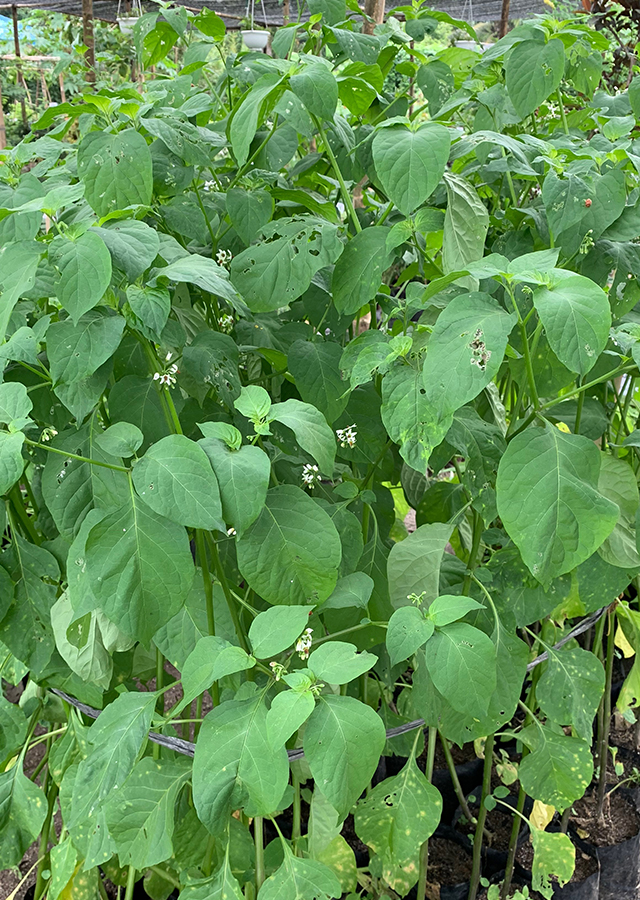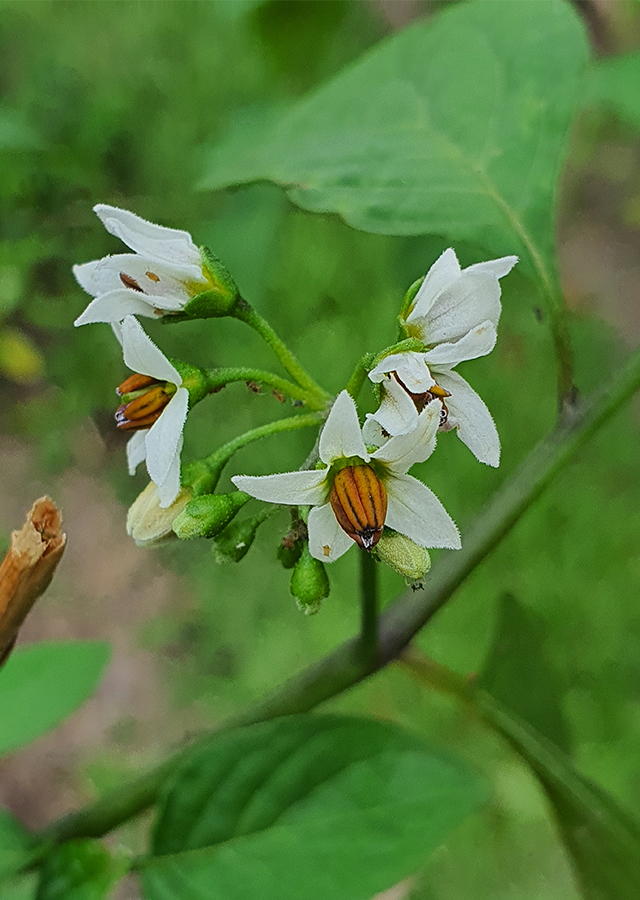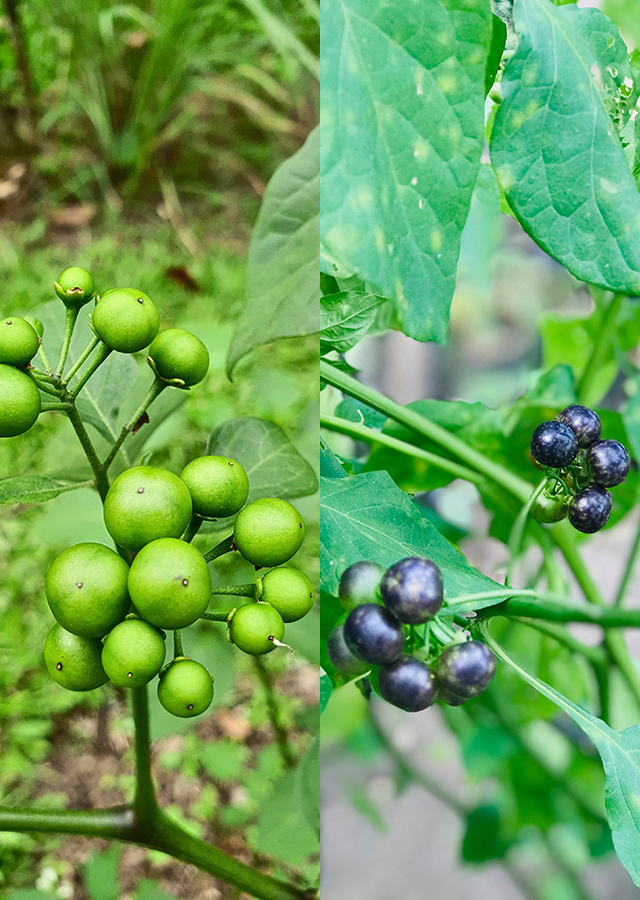Black Nightshade
Solanum nigrum L.
Solanaceae
Location in our garden
Vegetable



Synonym
Solanum acutifolium Kit. ex Kanitz
Solanum astroites G. Forst
Solanum atriplicifolium Desp. ex Dunal.
Solanum schultesii Opiz
Habitus
Herbaceous. Erect, glabrous, short lived perennial unarmed herb, grows up to 25 - 100 cm high, simple glandular and eglandular indumentum hairs
Part Used
Leaves
Fruit
Growing Requirements
Full Sunshine
Need Shade
Habitat
Riverbanks
Roadside
Grassland
Overview
Native to Europe and western Asia. It is now a very widespread species, having naturalized around the world in many regions. In Europe, Asia, Africa, North and South America, Australia, New Zealand and the Pacific Islands, this plant is currently found. Probably fairly widely distributed throughout the Malesian region.
Vernacular Names
Terung meranti (Malaysia), Toem tok (Thai), Lubi-lubi (Philippines), Long kui (Chinese), Kakmachi (India), Inuhozuki (Japanese), Brede martin (French), Lu lu due (Vietnam), Takuta (Papua).
Agroecology
In subtropical, topical and semi-arid environments, the black nighshade occurs as a common weed in gardens, waste areas and open forests. It thrives on a wide variety of soils from sea level to 3,100 m elevation in full sun or partial shade, in damp environments. It is best suited to high fertility soils, especially those high in phosphorus and nitrogen. Also, it is very tolerant of drought.
Morphology
- Stem - rounded or narrowly winged, glabrous or sparsely pubescent, green or purplish-tinged
- Leaves - ovate to ovate-lanceolate, concolorous, glabrous, up to 13 cm long and 7 cm wide. Entire or shallowly lobe with obtuse lobes, base cuneate and apex obtuse.
- Flowers - extraxillary, short, peduncle 1-2 cm long with pentamerous, bisexual, calyx campanulate with triangular lobes; corolla stellate, with triangular-acute lobes, white, 4-6 cm long, anthers oblong, ovary glabrous, style 5-6 mm and stigma capitate.
- Fruits - globose to ellipsoid, black in colour but is green when immature, 0.5 cm in diameter, with many seeds.
- Seeds - numerous, flattened and minutely pitted.
Cultivation
Generative (by seeds) propagation
Chemical Constituents
- Solanidine, desgalactotigonin, chaconine, solamargine, diosgenin, soladulcidine, tigogenin, tomatidenol, uttronins A and B, sonigroside A-H.
- (+)-pinoresinol (I), (+)-syringaresinol (II), (+)-medioresinol (III), scopoletin (IV), tetracosanoic acid (V) and beta-sitosterol (VI)
Traditional Medicinal Uses
- It used as a condiment, stimulant, tonic, for pile therapy, dysentery, stomach pain, bladder inflammation, asthma relief, bronchitis, cough, eye disease, itching, psoriasis, skin disease, eczema, ulcer, cramp relief, rheumatism, neuralgia, and excess fluid expulsion, digestive disorders.
- The whole plant is used for the treatment of dermatitis, inflammation, heavy discharge of women, diarrhea, and dysentery. It is used for abscesses, cervical cancer, leukorrhoea, and open sores. It is also used as a febrifuge and a diuretic.
- Young shoots are used as a male virility tonic and to treat female dysmenorrhoea.
- Leaf juice is used in Tanzania for the treatment of eye problems, particularly conjunctivitis.
- Pounded leaves are used in Cameroon and Brazil to treat sores and associated skin issues.
- Fruit used for treating asthma in Hawaii
- It has been used in Guatemala to treat dermatophytosis and protozoal infections.
- The plant was used by Europeans in Africa to treat convulsions. Africans are used for the prevention of headaches, ulcers, and as a sedative.
- The leaves are used in Indochina as purgative agents and to alleviate high blood pressure.
- Cooked leaves and stems are given to infants suffering from diarrhoea, in Papua New Guinea.
Part Used
Reference Sources
- Blomqvist, M.M. & Tien Ban, N. (2016). Plant Resources of South-East Asia: Medicinal Plant. https://uses.plantnet-project.org. Accessed on 15 October 2021.
- Zhao, Y., Liu, F., & Lou, H. 2010. Studies on the chemical constituents of Solanum nigrum. Zhong Yao Cai: Journal of Chinese Medicinal Materials 33(4): 555-560.

